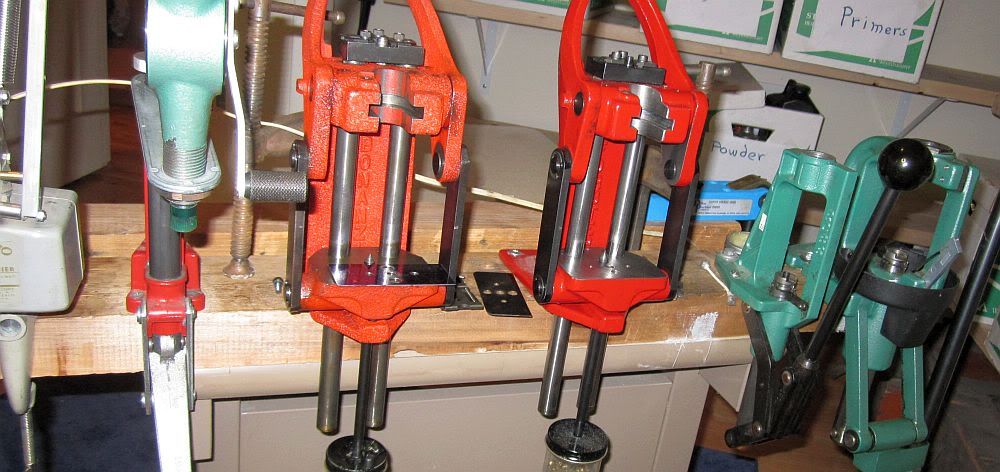Re: Got Everything I need, Where do I put it??
It sounds like you have a decent grasp of handloading, but I cannot emphasize this enough--read your manual first before ever reloadinga round--PERIOD!
Now having said that--to some of your questions.
First off, unless there is some reason you intend to be pulling a lot of bullets, don't worry about that so much that you have a dedicated press for it. I load a fair amount of rounds--2-3k per year, and probably pull about 6 bullets a year. I have the Hornady collet style puller and several collets for it, I just put it into the press when needed--no biggie.
As to the layout of your gear, think about the process & the way you want to do it. For me, cases get cleaned, then sized, then trimmed, then chamfered (in and outside) and then primed, charged and bullets seated. My gear is set up to follow this workflow.
Cleaning is on a small seperate table, and cases then go into loading blocks and go to the left side of my bench, and get deprimed/sized, trimmed, chamfered at the left side of my bench. I then prime the cases, which happens in the middle of my bench. From there, the cases stay in the same positon in a loading block and get charged--slightly to the right of center I suppose, and lastly I seat bullets into the cases....
which end of the bench I do this on depends on which seater die I'm gonna use, I've got a press at the far left of my bench which may do the seating, and another at the far right which may, depending on a few odd things in my mind
My Bench is setup so that I can sit basically in the center, reach all the way to the left or right and get er done!
I would post a pic, but my bench is so messy, I don't think I could stand the flaming I would get admonishing me to 'clean that bitch up!'
At any rate, I do like the idea of bolting or clamping your gear down temporarily until you like where you've got it set up, and then make it more permanent. It is cool to figure out your own work flow, and how you want to do things, as an example, I have a buddy who sizes and trims BEFORE cleaning, which to me is retarded, I don't want dirty cases in my die's etc, but he likes to clean after sizing, and then uniform primer pockets....if I uniform it is in part of the process with trimming, chamfering and then uniforming, but our benches are set up different due to the order in which we do things.
If you are only loading for two rifles, buying the comparators and all is nice, but really not needed. I would invest in some simple things that make the process smoother/nicer to me, for example a nice loading block like the Sinclair heavy duty blocks, and Satern Powder funnels, which are caliber specific. If you are loading for accuracy primarily, you may want to evolve into various types of resizing your brass, such as neck sizing only etc. I would tell any new reloader to begin with full length resizing every round, and then as you firmly grasp what is going on, I would progress to Partial Full Length Resizing. Setting up your die to do this is covered in most manuals, and basically this process minimizes the amount of sizing your brass undergoes, and provides a fit specific to an individual rifle.
IME this methodology (PFLR) leads to the best accuracy, and some new tools, like the Forster Bushing Bump die, are really slick in helping minimize as much as possible the amount of workng your brass, and are a version of PFLR.
Good luck moving forward, it sounds like you are off to a good start with your gear.
Good luck on your setup, it is fun to figure out to suit your specific needs/wants!



